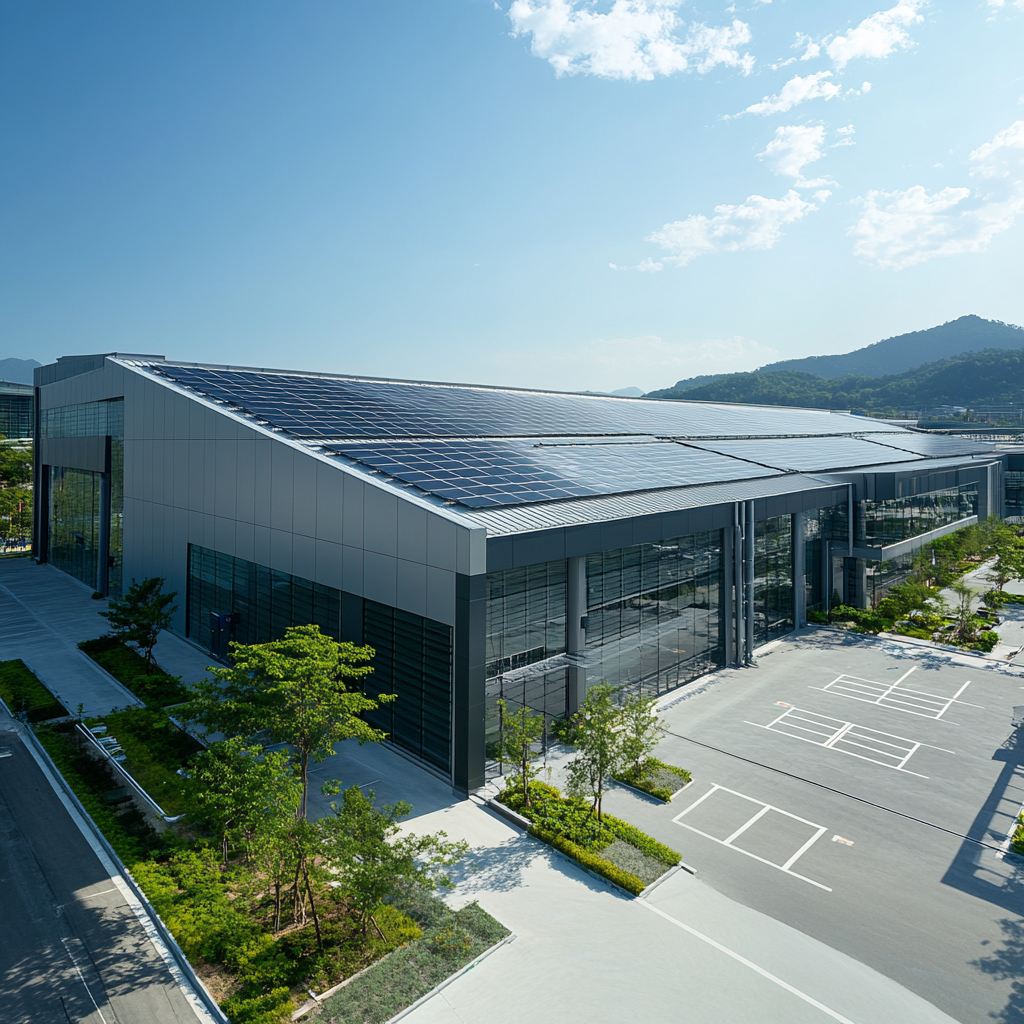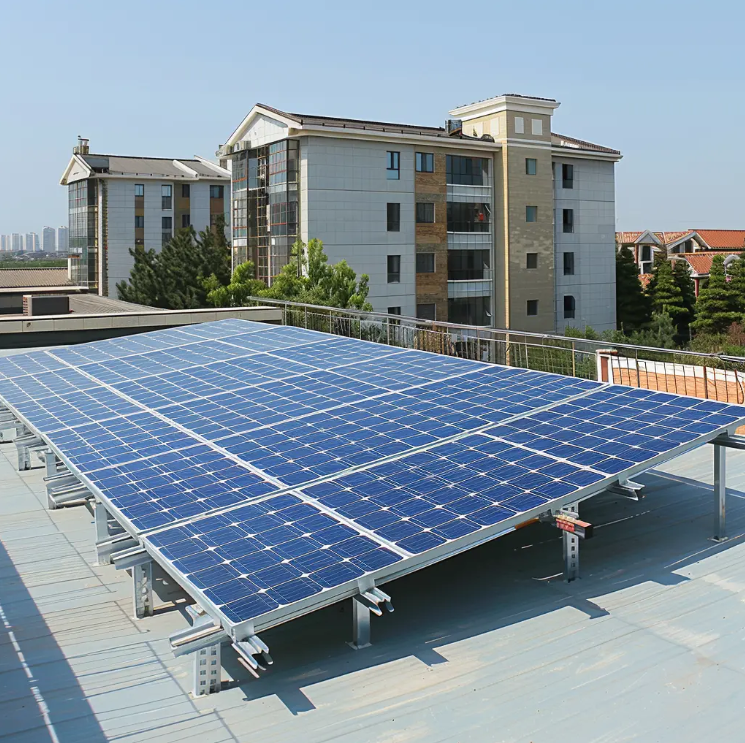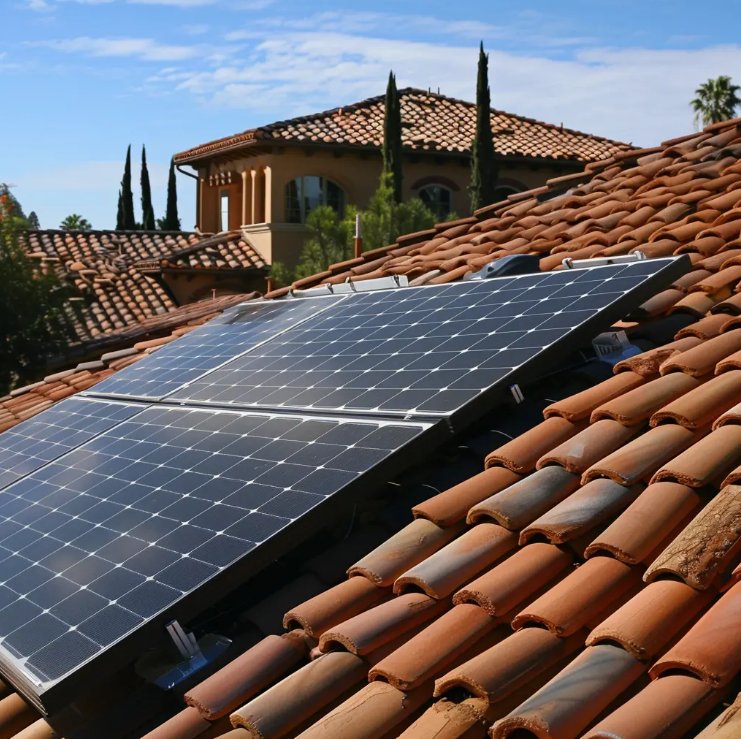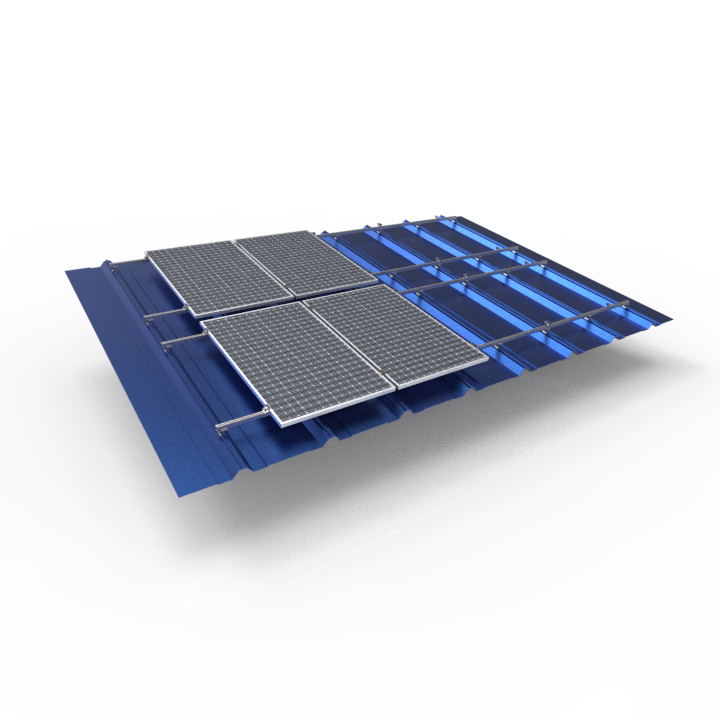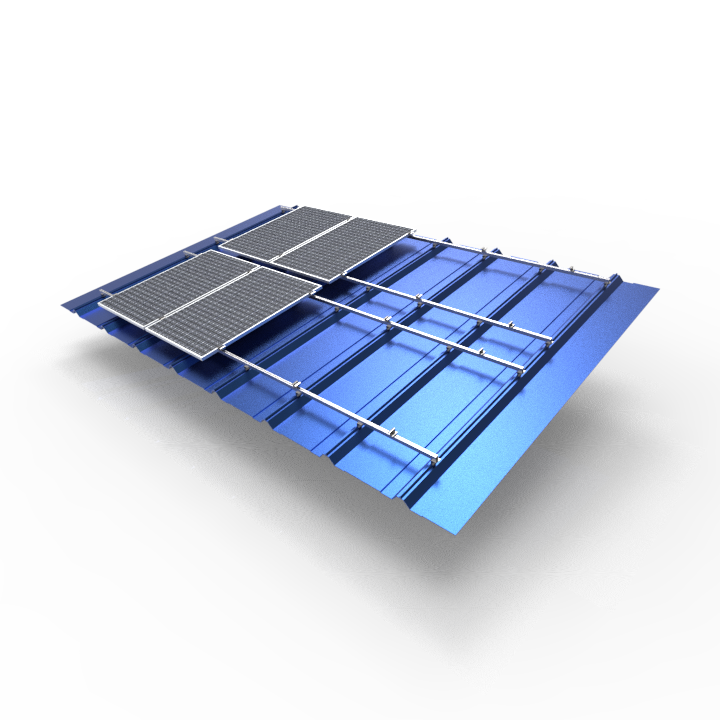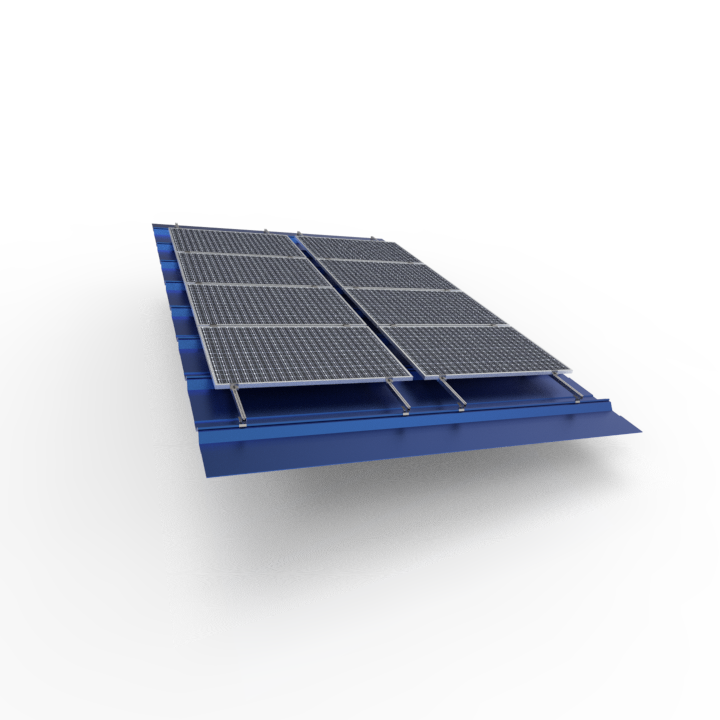Introduction to Solar Inverters and Their Role
Overview of Solar Power Systems
Solar power systems are an integral part of the renewable energy landscape, converting sunlight into electricity to meet the growing demand for sustainable energy sources. These systems comprise several key components, including solar panels, inverters, batteries, and monitoring systems. Inverters play a crucial role by transforming the direct current (DC) generated by solar panels into alternating current (AC), the standard electrical current used in homes. As the global push for solar energy intensifies, the solar energy market is projected to expand to over 1,200 gigawatts by 2025. This growth highlights the increasing importance of efficient solar power systems in both residential and commercial settings.
The Critical Function of Inverters
Inverters are vital not just for converting DC to AC but also for optimizing the performance and efficiency of solar power systems. They monitor the system's performance and adjust voltage levels to maximize energy output, ensuring the solar setup operates at its best. Furthermore, inverters safeguard system integrity by disconnecting from the grid during outages to prevent harmful backfeeding. The enhanced efficiency these devices provide is not only supported by advanced algorithms that regulate output but is also underscored by industry reports highlighting their significant impact on overall energy yield. As the demand for energy-efficient solutions rises, the function of inverters becomes increasingly pivotal in solar energy production and management.
String Inverters: Features and Benefits
How String Inverters Work
String inverters connect multiple solar panels in a series or string, which simplifies the installation process for solar power systems. They efficiently convert the direct current (DC) electricity generated from a panel array into alternating current (AC) for home use. By using a central point for energy conversion, string inverters provide a cost-effective solution for solar installations, especially for projects with straightforward layouts.
Pros: Cost-Effectiveness and Simplicity
String inverters are generally lower in cost compared to other inverter types like microinverters, making them particularly attractive for budget-conscious solar projects. Their simplicity in design contributes to easier installation and maintenance, with a reduced number of components involved. This not only lowers initial investment costs but also decreases the likelihood of component failures, thus promoting long-term reliability.
Cons: Shading Limitations
However, one of the main drawbacks of string inverters is their sensitivity to shading. When even one panel in a string is shaded, it can significantly reduce the output of the entire string. This can lead to performance issues, especially in installations where partial shading from trees or buildings is unavoidable. To mitigate such inefficiencies, careful panel placement and layout planning are essential for maximizing energy yield.
Best for Unshaded Residential Systems
String inverters are best suited for residential systems with no shading challenges and clear exposure to sunlight throughout the day. They are ideal for new installations where the panel layout can be optimized from the start, and they support quick returns on investment due to the fewer components involved in these systems. For homes with consistent sunlight and a simple roof layout, string inverters offer a reliable and efficient solution.
Microinverters: Panel-Level Optimization
Individual Panel Performance
Microinverters offer a distinct advantage by facilitating panel-level optimization. Each solar panel is equipped with a microinverter, ensuring that the performance and energy output of each panel can be individually tracked and adjusted. This setup allows for maximized overall system efficiency because it mitigates common issues such as shading or misalignment that can negatively impact solar energy production. The ability to address each panel independently offers flexibility and ensures that homeowners can achieve consistent power output despite environmental challenges.
Pros: Shading Resilience and Monitoring
Microinverters are known for their excellent shading resilience. Unlike traditional systems, these inverters operate independently, which means they aren't affected by shading problems that can reduce output in entire strings. Additionally, microinverters provide the benefit of detailed performance monitoring through app integrations, allowing homeowners to assess and manage each panel's output in real-time. This capability supports proactive maintenance and fosters more effective energy management, as any deviations or inefficiencies can be promptly addressed.
Cons: Higher Initial Costs
However, microinverters come with a higher initial cost compared to traditional string inverters. This might deter homeowners from choosing them for their solar setups, as the upfront investment can be substantial. Despite these high initial costs, many invest in microinverters because the long-term benefits they offer through enhanced efficiency and greater energy outputs in challenging environments can balance the total cost of ownership over time.
Ideal for Complex Roof Layouts
Microinverters are particularly ideal for installations where roof layouts are complex due to varying orientations or pitches. Their flexibility accommodates urban environments where available space may enforce different panel angles and positions. The adaptability of microinverters makes them a smart choice for diverse installation conditions, as they can seamlessly adjust to varied environmental settings while maintaining efficient energy conversion. This flexibility underscores their importance in optimizing solar panel systems across different scenarios.
Power Optimizers: Enhancing System Efficiency
Combining Central and Microinverter Benefits
Power optimizers are devices that work with string inverters to boost energy efficiency at the panel level. Unlike traditional systems, power optimizers maximize energy yield by adjusting each panel's output to improve overall system performance. This hybrid approach offers greater flexibility and efficiency than standard inverter systems, merging the best of both central and microinverter functionalities. By ensuring that each panel contributes to its fullest potential, power optimizers help in achieving a more consistent and higher energy output.
Pros: Partial Shading Mitigation
One of the standout features of power optimizers is their ability to mitigate the effects of partial shading, a common issue in solar energy systems. They allow panels experiencing variable sunlight to still perform optimally, enhancing overall energy production. This mitigation enables better performance in less-than-ideal lighting conditions, thereby improving the returns on investment by maximizing energy generation even when some panels are obstructed or partially shaded by trees, buildings, or other structures.
Cons: Dependency on Central Inverters
Despite their many benefits, power optimizers are not without drawbacks. They still depend heavily on a central inverter, making them vulnerable if the central unit fails. In situations where total independence from a central system is desirable, this reliance can be a significant deficiency. Therefore, when planning your system, it's crucial to keep this dependency in mind, understanding that a failure in the central inverter can bring the entire solar array to a halt.
Suited for Mixed Lighting Conditions
Power optimizers are particularly beneficial for installations subjected to mixed lighting conditions, such as urban areas with frequent shading from surrounding buildings. They enhance system efficiency by allowing panels in less-than-ideal sunlight to contribute effectively to energy production. This capability broadens the application of solar setups, making them viable in diverse residential and commercial settings with challenging lighting environments, thus making optimizers a versatile choice for ensuring consistent energy generation.
Central Inverters: Large-Scale Solutions
High-Capacity Energy Conversion
Central inverters are essential for large-scale solar installations, such as solar farms, due to their high-capacity energy conversion capabilities. They handle the energy output from numerous strings of panels, converting it efficiently by optimizing space and reducing installation time. This design caters to utility-scale operations where maximizing efficiency is crucial. Central inverters are renowned for their ability to manage vast amounts of solar-generated electricity, making them integral to large energy projects.
Pros: Industrial Efficiency
Central inverters are highly efficient, often achieving ratings above 95%, making them a cost-effective choice for industrial-scale solar systems. This high efficiency means that fewer resources are needed to manage multiple inputs and outputs, thereby enhancing overall economic attractiveness. Furthermore, their scalability supports the expansion of energy operations, aligning with growing industrial energy demands. As a result, they are a preferred option for large installations looking to maximize their return on investment.
Cons: Single Point of Failure
A notable drawback of central inverters is their role as a single point of failure. If the central inverter malfunctions, it can result in a complete system outage, leading to significant energy production and revenue losses. Consequently, regular maintenance and proactive monitoring are essential to minimize the risk of downtime. Understanding these vulnerabilities is vital for ensuring uninterrupted solar energy generation.
Optimal for Solar Farms
Central inverters are ideally suited to solar farm applications where panels can be arranged in a uniform orientation. This uniformity maximizes energy production by facilitating efficient scalability of solar projects. Given their ability to handle large volumes of energy, central inverters are a staple technology in extensive, grid-connected solar installations, providing reliable and efficient power conversion. Their utility in such settings underscores their importance in the development of renewable energy infrastructure.
FAQ
What is the main role of solar inverters?
Solar inverters convert the direct current (DC) generated by solar panels into alternating current (AC), which is the standard electrical current used in homes. They also optimize performance and efficiency of solar power systems.
Why are microinverters more expensive than string inverters?
Microinverters tend to have a higher initial cost due to their complex technology offering panel-level optimization, which enhances efficiency and power output, especially in challenging environments.
Are string inverters suitable for shaded areas?
No, string inverters are sensitive to shading, which can reduce the output of the entire string when even one panel is affected. They are best suited for unshaded residential systems.
What are the advantages of power optimizers?
Power optimizers enhance system efficiency, manage partial shading, and optimize each panel's output to improve overall energy production. They are useful in installations with mixed lighting conditions.
For what scale of projects are central inverters most suitable?
Central inverters are most suitable for large-scale solar installations like solar farms, where uniform panel orientation and high-capacity energy conversion are crucial.

